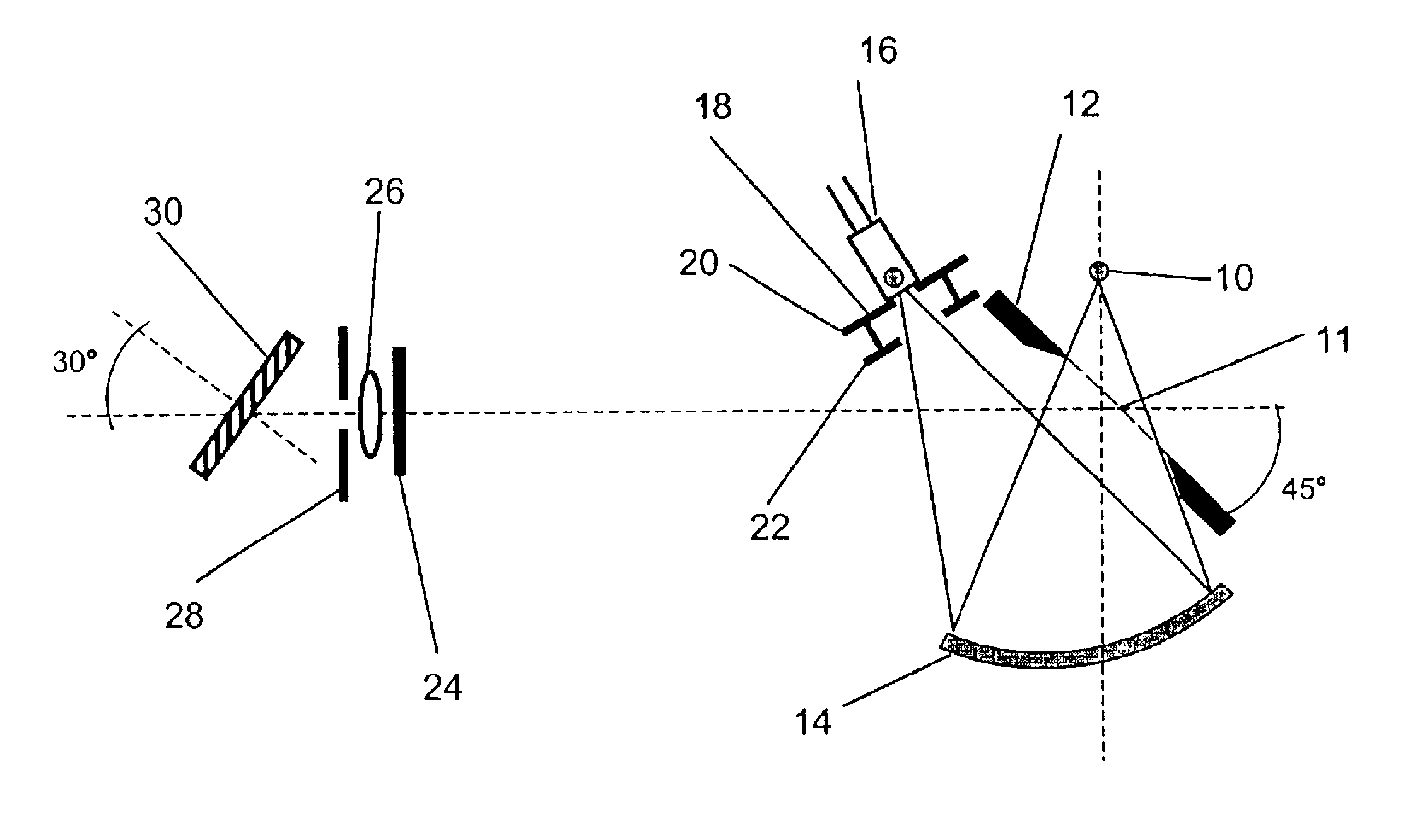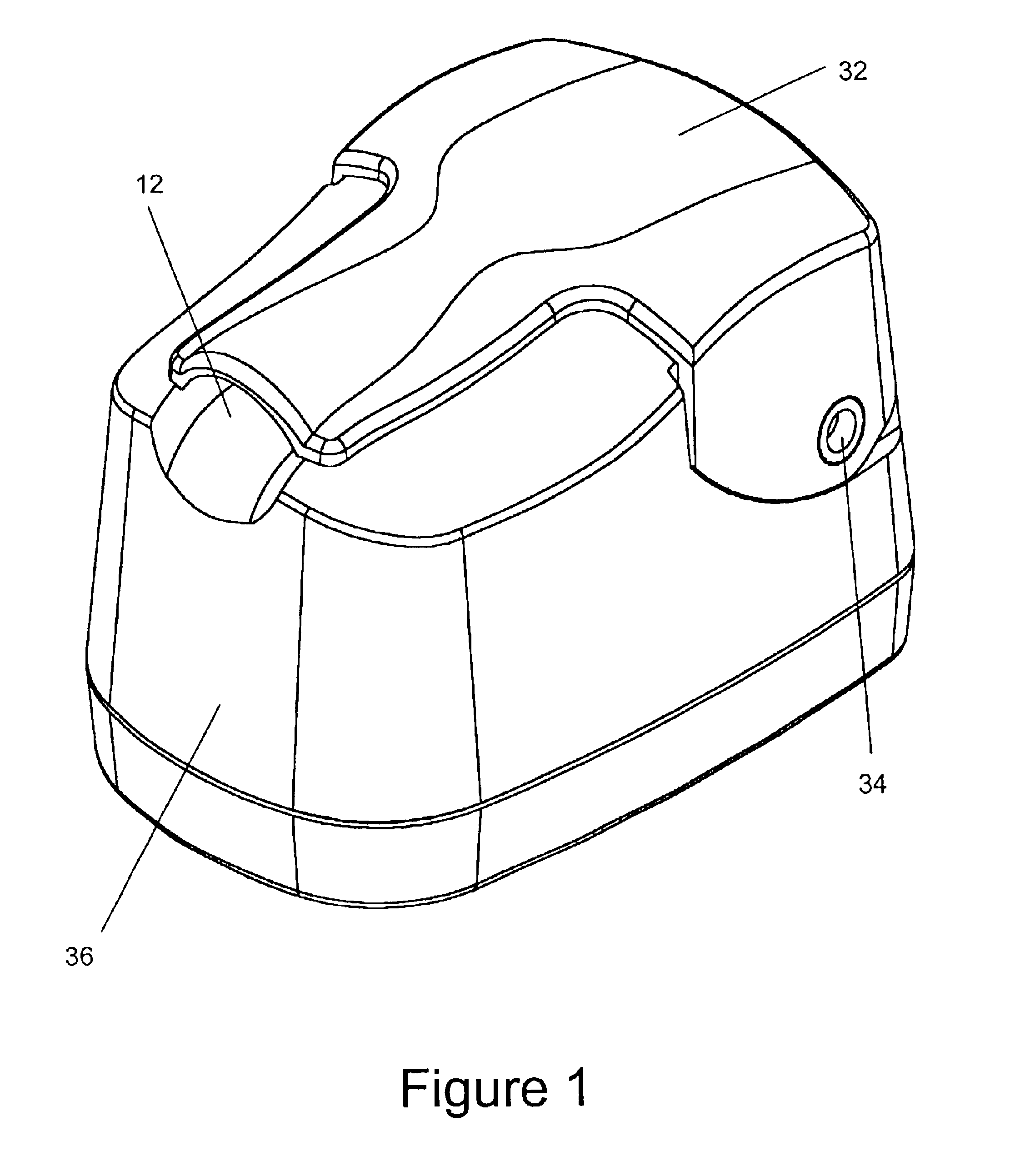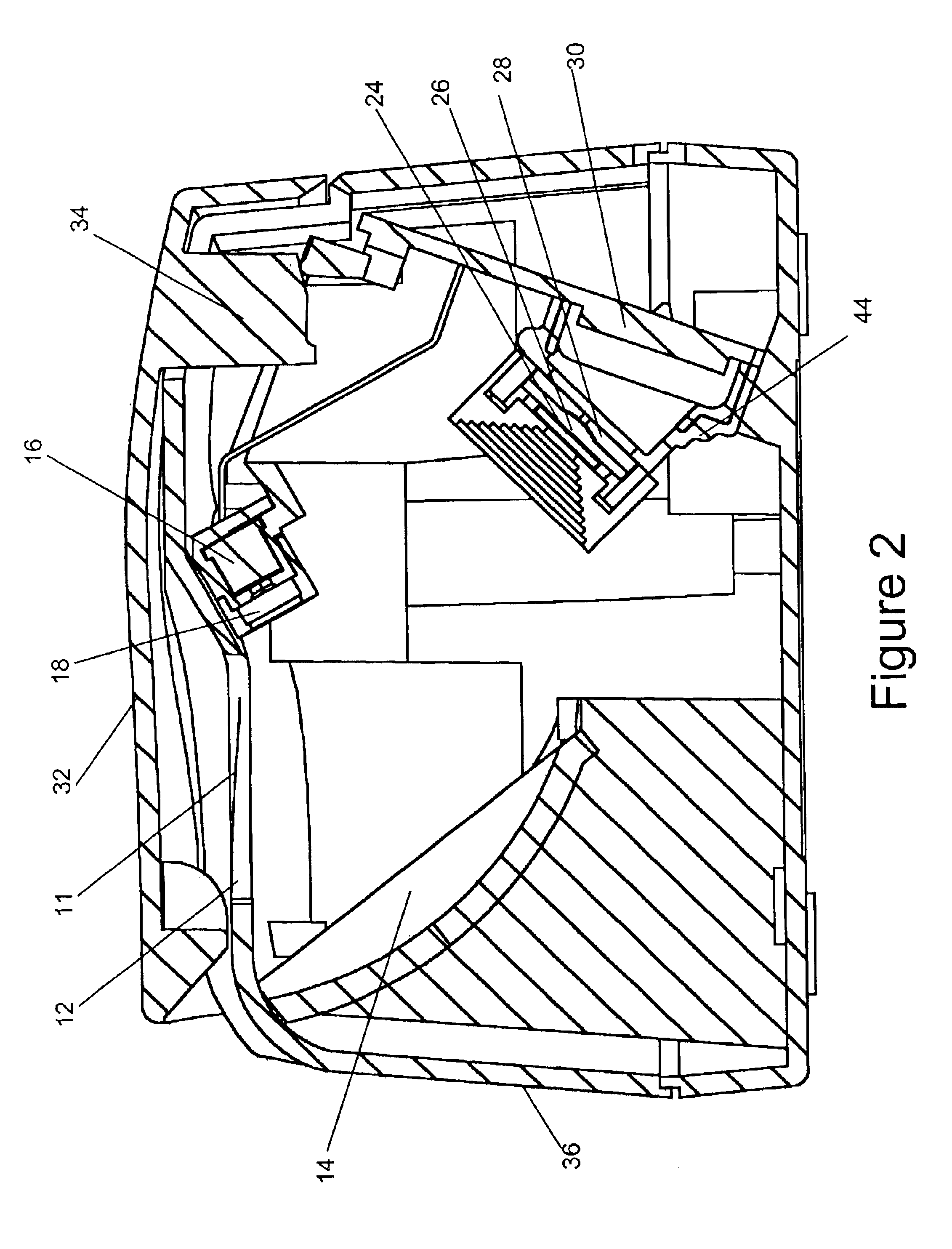Non-contact optical imaging system for biometric identification
an optical imaging system and biometric technology, applied in the field of non-contact optical imaging systems for biometric identification, can solve the problems of large variations, inability to detect the presence of contact optical biometric identification devices, and the strength of each biometric identification device, so as to maximize the contrast of features and ridges
- Summary
- Abstract
- Description
- Claims
- Application Information
AI Technical Summary
Benefits of technology
Problems solved by technology
Method used
Image
Examples
Embodiment Construction
The invention produces high quality, high contrast, uniform, and consistent images of the surface features, such as characteristic ridges, of a finger or other biometric object. The basic physical property upon which the reader depends is the use of specular reflection of light to maximize the contrast of features, ridges, and height variations. Optionally, the invention uses a polarizer that filters and thereby enhances the specular reflection from the surface of the object. Optionally, the invention can also include pre-processing means for adjusting image brightness, contrast, and magnification.
In its presently preferred embodiment, the invention comprises (1) a light source that is a green light emitting diode or LED without a lens; (2) a spatial filter comprising a first stage with an aperture positioned against the light source for defining the effective size of the light source and a second stage with an aperture positioned concentric to the aperture of the first stage for de...
PUM
 Login to View More
Login to View More Abstract
Description
Claims
Application Information
 Login to View More
Login to View More - R&D
- Intellectual Property
- Life Sciences
- Materials
- Tech Scout
- Unparalleled Data Quality
- Higher Quality Content
- 60% Fewer Hallucinations
Browse by: Latest US Patents, China's latest patents, Technical Efficacy Thesaurus, Application Domain, Technology Topic, Popular Technical Reports.
© 2025 PatSnap. All rights reserved.Legal|Privacy policy|Modern Slavery Act Transparency Statement|Sitemap|About US| Contact US: help@patsnap.com



